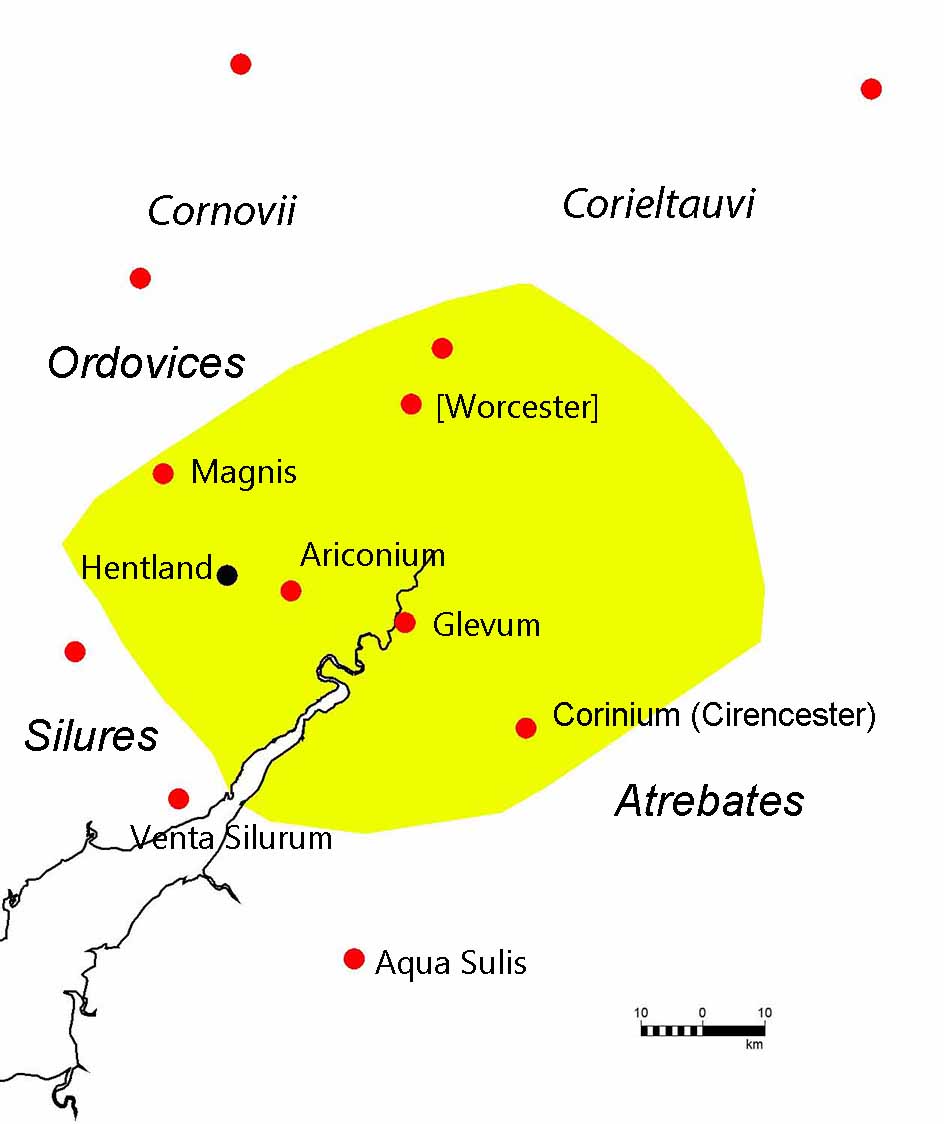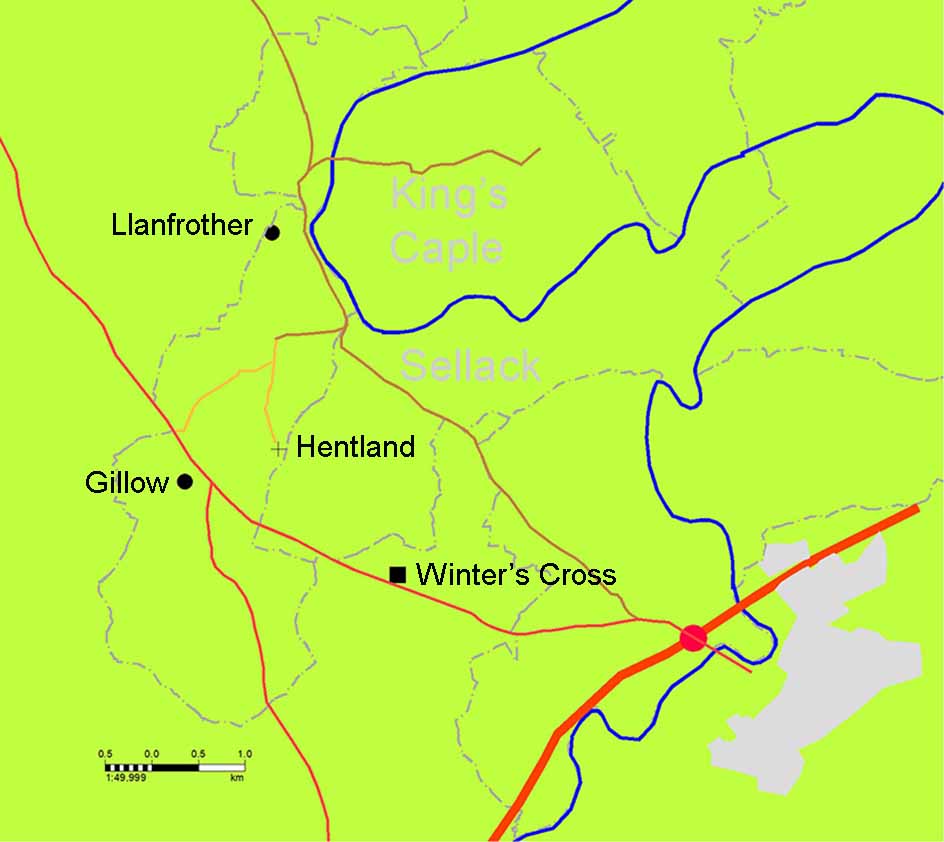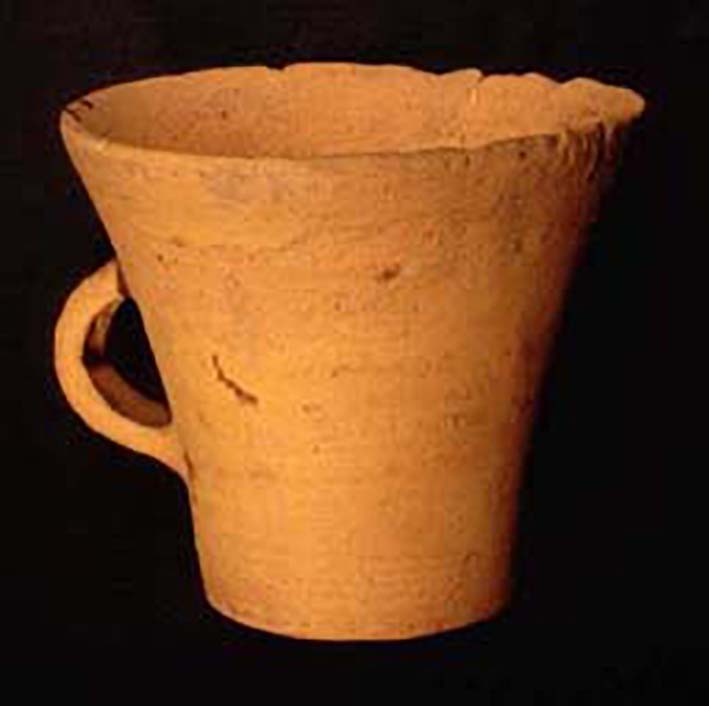Hentland seems to have been in the western part of the territory of the Dubonni tribe, who were readily absorbed into the Empire; for a while in the 1st century forming a buffer between the most Romanised part of Britain in the South east and the tribes to the west; the and Silures and the Ordovices. Their civitas capital was Corinium Dobunnorum, modern Cirencester.
There seem to have been several settlements in the parish during this period. One was surrounded by a bank and ditch and was at Gillow, not far from the iron age hillfort of Gaer Cop.
Another was at Lanfrother, near the river, a site which was first occupied in the Neolothic and was later the supposed location of the early Medieval monastery of St Dubricius (Dyfrig).
There are no Roman Roads in the Parish, in the sense of roads built by the Roman army. A suggestion that a Roman road ran from Red Rail Ford past Hentland Church seems to have no evidence to support it.
Many things remained the same after the area became part of the Empire. The fields continued to be ploughed and crops grown. Pottery, previously quite rare, become relatively common - many fields in the area have sherds of Romano-British pottery in the soil. Pottery in the period was mass-produced.Pots and plates would have originally been used in households and generally thrown out when broken, although some particularly good pieces were repaired by means of small rivets.
Severn Valley Ware is the most common type of Romano-British pottery found in Herefordshire. It was first manufactured in about 30AD, that is, some years before the Roman Conquest and so can be considered a Dobunnic industry, but it is clearly heavily influenced by pottry made elsewhere in the Empire, notably the 'Samian' wares of south and central Gaul from the late 1st century BC. Severn Valley ware continued in production until the 4th. Severn Valley pottery kiln sites have been identified at Ledbury, Herefordshire; Alkington, Gloucestershire; Malvern, Worcestershire; Perry Barr and Wroxeter. Production continued into 4th century AD. This pottery is widely distributed and is found all over the parish, notably at the Gillow Farm excavations and those adjacent to the church in 1970.
But Hentland, was on the edge of one of the major industrial areas of Roman Britain. The iron industry in the south east Herefordshire was centred on Ariconium (Weston under Penyard) and began in the pre-Roman iron age.
Although there was a concentration of activity at Ariconium, the industry was widely distributed across the area. Romano-British slag is present in the parish and there were bloomery furnaces at Winter's Cross, 1.7km south east of the church.
The settlements of the area appear to have developed a mixed economy: agriculture co-existing with ironworking.


